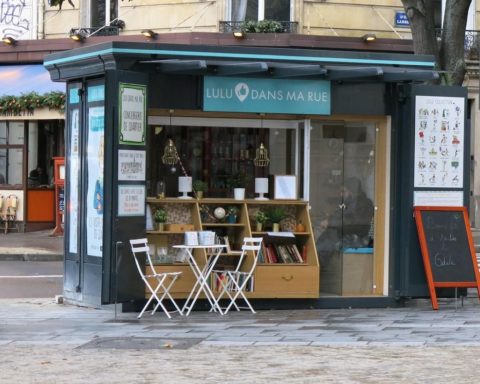As international competition is increasing every day and consumers are becoming increasingly weary of products, the need for companies to innovate is well known. However, this is no longer enough; other criteria are emerging that are also of particular importance to consumers.
Companies under surveillance
Under popular pressure, companies such as Nike in the 1990s, and more recently H&M in Bangladesh, have had to adopt new social standards to silence criticism of the lack of respect for workers' rights in the developing countries where they operate.
In recent times, consumers have become more and more aware of what they are buying (see the movement of the consom'action) and services are offered to them in order to identify whether or not a product is suitable for them. For example, the company mesgouts.fr allows consumers to find out about the products they buy, whether in terms of the raw materials used or the place where the products are processed. In a more traditional way, indications concerning the origin or the production method flourish on the products.
The actions of companies are increasingly scrutinised by various observers (consumer associations, journalists, competitors, etc.) and they can no longer remain impassive in the face of this rise in consumer awareness and power. The time when Milton Friedman declared in 1970 that, "the only social responsibility of a company is to increase its profits" is over.
CSR is not an effective solution
Corporate social responsibility is now a major issue in most multinationals, which are devoting an increasing proportion of their resources to it. However, according to Michael Porter and Mark Kramer, it has failed to demonstrate its effectiveness in tackling the problems of today's societies. Indeed, they criticize it for being only a partial solution to society's ills.
Faced with this inability, in their article, The link between Competitive Advantage and Corporate Social Responsibility, the two authors propose a model that combines both economic performance and social responsibility. This model is in contradiction with corporate social responsibility for at least two reasons: it opposes the company to society and it is generic, i.e. not adapted to the particularities of each firm.
The concept of Shared Value Creation
The renowned Harvard Business School Professor Michael Porter and the CEO of the FSG organization, Mark Kramer, both developed the concept of Creating Shared Value. This concept introduces a corporate strategy that allows for the creation of both economic and societal value. By using its strength, i.e. its competitive advantage, the firm can respond more effectively to certain types of problems.
According to the authors, corporate social responsibility should not be seen as a constraint but rather as a source of opportunities and development. They denounce the hypocrisy and ineffectiveness of the corporate social responsibility approach of most companies, which see it only as a promotional tool to improve their brand image.
The Nestlé example
In 1962, Nestlé wanted to establish a presence in India. However, the quality of the local milk was not sufficient for the production of the products. The Swiss group therefore decided to help farmers to improve their production by facilitating access to refrigeration technology, milk transport, veterinarians and agricultural engineers. These measures have thus enabled Nestlé to have access to good quality milk and to control its supplies.
By innovating in this way, Nestlé has expanded its access to new markets while meeting the nutritional needs of thousands of Indians.
Since then, Nestlé has tried to promote a shared development approach that makes it today the most focused multinational company on the creation of shared value. In addition, Nestlé has appointed a Director of Creating Shared Value, and Michael Porter himself is a member of the Food Group's Creating Shared Value Steering Committee.
Since 2006, Nestlé has initiated changes in its business processes to embed the creation of Shared Value within its operations. For example, in some countries where malnutrition affects a large number of people, Nestlé is adding nutritional additives such as trace elements to improve the living conditions of these populations and reduce their risk of mortality.
A model that adapts to each company
 Julia Schmidt and Uta Renken, two researchers from the University of Nuremberg, proposed the "Tree of Shared Value Creation". (see opposite). This tree, which groups together all the characteristics of a shared value creation, aims to place Porter and Kramer's theoretical contribution in an applied context.
Julia Schmidt and Uta Renken, two researchers from the University of Nuremberg, proposed the "Tree of Shared Value Creation". (see opposite). This tree, which groups together all the characteristics of a shared value creation, aims to place Porter and Kramer's theoretical contribution in an applied context.
Their work shows that, to be effective, the creation of shared value must be tailored to each company. Indeed, if we refer to the tree, the roots represent the company's values. From these roots are born a given productivity, a way of innovating, as well as a capacity to absorb the surrounding ideas. The mix of these three factors then makes it possible to define all the different facets of the creation of shared value where the company has a competitive advantage, be it social, economic or environmental.
What strategy?
There are different ways to implement a strategy for creating shared value within an organization. Here are the models of two multinational food companies: Nestlé and Danone.
According to Janet Voute, Director of Public Affairs at Nestlé, the Swiss group has integrated "the concept of creating shared value throughout the entire organisation". The company is thus present in branches as varied as chocolates, charcuterie (Herta) and coffee (Nespresso). These actions revolve around improvements in product quality (positive effects for the consumer), fair trade (positive effects for the producer) and the environment (positive effects for society).
Danone is also very committed to these initiatives. Since 2001, the food group has launched the initiative Danone Way which aims to "meet the objective of managing the Group's relations and impacts on its stakeholders, both upstream and downstream, by including policies and criteria for environmental, social, governance, nutrition and health performance".
However, the approach is different from that of Nestlé, as Danone favours partnerships with other entities. For example, the company has created a partnership with the Grameen Bank founded by Muhammad Yunus: Grameen Danone. It is in no way a question of patronage, the joint venture's objective being to be profitable in order to reinvest its profits to increase consumption and reduce malnutrition. A fair price is set in order to buy milk from the farmers at a price allowing them to live decently and develop their activity. In the same spirit, Danone has formed a partnership with the Atikamekw Indians of Manawan in Canada. The blueberry-packing joint venture required the construction of a processing plant financed in part by Danone.
An upcoming transformation of business models
One can legitimately wonder whether this concept will be able to shake up the organisation of the major multinationals. A first answer can be given thanks to one of the authors of the article. Indeed, Michael Porter remains, despite the obsolescence of some of his models, influential among the main capitalist thinkers, top executives and global entrepreneurs. In this respect, it is interesting to note that this change in mentality has already affected Carlos Ghosn, who stated that "no large company can focus exclusively on its economic performance without worrying about what is happening around it".
This concept provides solutions to new consumer concerns. If it occurs, this change will lead to changes in both products and organisations. The ability of companies to evolve their business model will therefore be paramount in this race to satisfy consumer needs.
©Thibaut Lottier / MTI Review January 2014
With our thanks to MTI Review magazine for this kind collaboration












